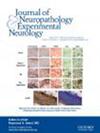Utility of OLIG2 immunostaining in pediatric brain tumors with embryonal morphology
IF 3.2
3区 医学
Q2 CLINICAL NEUROLOGY
引用次数: 0
Abstract
This study evaluates the diagnostic utility of OLIG2 immunohistochemistry for distinguishing between pediatric high-grade gliomas (pHGG) and embryonal tumors (ETs) of the CNS. Utilizing a retrospective pediatric cohort (1990-2021) of 56 CNS tumors, classified initially as primitive neuroectodermal tumors or CNS ET, we reclassified the cases based on WHO CNS5 criteria after comprehensive review and additional molecular testing that included next-generation sequencing and DNA methylation profiling. Our results indicate that OLIG2 immunopositivity was negative or minimal in a significant subset of pHGG cases (6 out of 11). At the same time, it showed diffuse expression in all cases of CNS neuroblastomas with FOXR2 activation (5/5), demonstrating its limited specificity in differentiating between pHGG and ET. Variable OLIG2 expression in other ETs, ATRT, and ETMR suggests the broader diagnostic implications of the marker. Furthermore, incidental findings of OLIG2 positivity in cases traditionally expected to be negative, such as medulloblastoma and ependymoma, introduce an additional layer of complexity. Together, these findings highlight the challenges of relying solely on OLIG2 immunostaining for accurate tumor classification in pediatric CNS neoplasms and underscore the importance of an integrated diagnostic approach.OLIG2免疫染色在具有胚胎形态的小儿脑肿瘤中的应用
本研究评估了 OLIG2 免疫组化在区分小儿高级别胶质瘤(pHGG)和中枢神经系统胚胎瘤(ETs)方面的诊断作用。我们利用回顾性儿科队列(1990-2021 年)对 56 例中枢神经系统肿瘤进行了分类,这些肿瘤最初被归类为原始神经外胚层肿瘤或中枢神经系统 ET,经过全面审查和额外的分子检测(包括新一代测序和 DNA 甲基化分析)后,我们根据 WHO CNS5 标准对病例进行了重新分类。我们的结果表明,pHGG 病例中有相当一部分(11 例中有 6 例)的 OLIG2 免疫阳性率为阴性或极低。同时,在所有 FOXR2 激活的中枢神经系统神经母细胞瘤病例(5/5)中,OLIG2 均呈弥漫性表达,这表明它在区分 pHGG 和 ET 方面的特异性有限。OLIG2 在其他 ET、ATRT 和 ETMR 中的不同表达表明该标记物具有更广泛的诊断意义。此外,在髓母细胞瘤和上皮瘤等传统预期为阴性的病例中偶然发现 OLIG2 阳性,也增加了诊断的复杂性。总之,这些发现凸显了仅依靠 OLIG2 免疫染色来对小儿中枢神经系统肿瘤进行准确分类所面临的挑战,并强调了综合诊断方法的重要性。
本文章由计算机程序翻译,如有差异,请以英文原文为准。
求助全文
约1分钟内获得全文
求助全文
来源期刊
CiteScore
5.40
自引率
6.20%
发文量
118
审稿时长
6-12 weeks
期刊介绍:
Journal of Neuropathology & Experimental Neurology is the official journal of the American Association of Neuropathologists, Inc. (AANP). The journal publishes peer-reviewed studies on neuropathology and experimental neuroscience, book reviews, letters, and Association news, covering a broad spectrum of fields in basic neuroscience with an emphasis on human neurological diseases. It is written by and for neuropathologists, neurologists, neurosurgeons, pathologists, psychiatrists, and basic neuroscientists from around the world. Publication has been continuous since 1942.

 求助内容:
求助内容: 应助结果提醒方式:
应助结果提醒方式:


